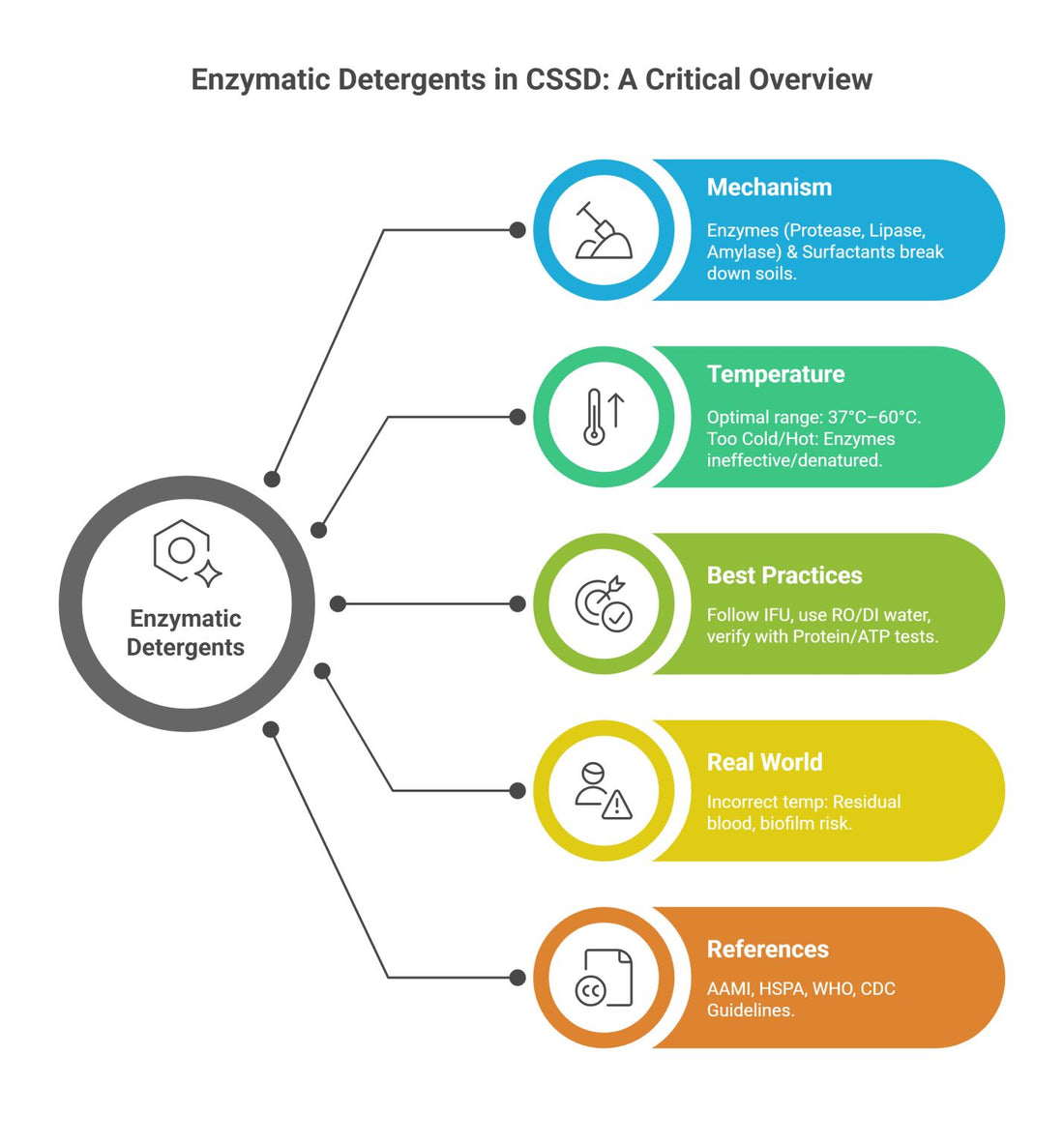
Enzymatic Detergents in CSSD: Best Practices for Safe & Effective Instrument Reprocessing
Compartir
Enzymatic Detergents in CSSD – Why They Matter for Infection Prevention
In Central Sterile Supply Departments (CSSD), enzymatic detergents are the foundation of safe and effective cleaning before sterilization. They combine enzymes + surfactants to remove complex surgical soils such as blood, tissue, fats, and starches.
- Protease → breaks down proteins (blood, tissue)
- Lipase → dissolves oils and fats
- Amylase → removes starch and carbohydrate residues
Temperature – The Game Changer in Enzymatic Cleaning
- Optimal range: 37–60°C (100–140°F)
- Below 30°C → enzymes ineffective, leaving soils intact
- Above 65°C → enzymes denatured before cleaning begins
Best Practices in CSSD
✔ Follow manufacturer’s IFU (dilution, soak time)
✔ Use RO/DI water to avoid mineral deposits and residues
✔ Verify cleaning with ATP or protein testing kits
✔ Always remember: cleaning is the first step, not sterilization

How SADA Medical Supports CSSD Teams
At SADA Medical, we specialize in autoclaves, ultrasonic cleaners, washer-disinfectors, and sterilization monitoring devices designed to integrate seamlessly with proper cleaning protocols. Our solutions help:
- Ensure compliance with AAMI / WHO / CDC guidelines
- Improve patient safety by preventing biofilm and contamination
- Deliver reliable sterilization outcomes with validated performance
💬 Looking for advanced CSSD solutions? Contact us today to discuss your hospital or clinic’s needs.
📞 WhatsApp: +8618056076519 | 📧 Email: vivian@sadamedical.com